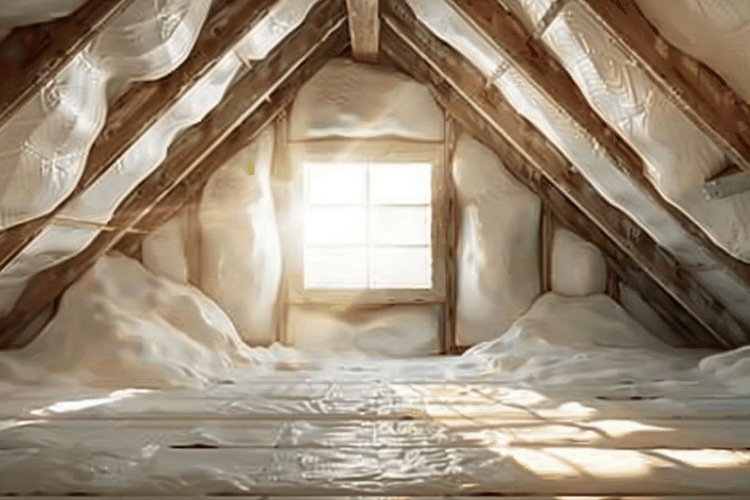Spray Foam Insulation: Home Energy Efficiency & Construction Benefits
Spray foam insulation is a modern solution used widely in residential and commercial construction to reduce heat transfer and air leakage. Applied as a liquid that expands into a foam, it forms an insulating, air-sealing layer that improves comfort and can lower energy bills. This article explains how spray foam works, where it’s best used, and what to consider when choosing services in your area.

What is spray foam insulation?
Spray foam is a two-part chemical mixture applied on-site that expands to fill cavities, gaps, and irregular surfaces. There are two main forms: open-cell, which is softer and more vapor-permeable, and closed-cell, which is denser and provides higher R-values per inch. Beyond thermal resistance, spray foam acts as an air barrier, limiting drafts and moisture infiltration that often compromise other insulation types.
How does insulation improve home energy efficiency?
Effective insulation reduces heat flow through walls, roofs, and floors, which lowers the workload on heating and cooling systems. By sealing ducts, rim joists, and penetrations with spray foam, homes lose less conditioned air and require less energy to maintain comfortable temperatures. That translates to improved energy efficiency, more consistent indoor temperatures, and often reduced utility bills—especially in climates with extreme seasonal temperature swings.
How is spray foam used in construction?
In new construction, spray foam is commonly applied to wall cavities, attic undersides, and foundation walls to create a continuous thermal envelope. Remodels and retrofits also benefit when foam is used to seal attic floors, rim joists, and around window and door frames. Contractors typically apply spray foam using specialized rigs and PPE; the expanding foam adheres to surfaces and conforms to odd shapes, which makes it especially useful where traditional batt or blown insulation is hard to fit.
What types of spray foam are available?
Open-cell spray foam is lighter and more flexible, typically used for interior applications where sound dampening is desired and where a vapor retarder is not required. Closed-cell foam is rigid, moisture resistant, and offers higher structural strength and R-value, making it suitable for exterior or below-grade applications. Choice depends on project goals—thermal resistance, moisture control, structural needs—and local building codes and climate considerations.
How does spray foam affect indoor air quality and safety?
Properly installed spray foam can improve indoor air quality by reducing infiltration of outdoor pollutants, dust, and pollen. However, during and immediately after installation, installers and occupants should avoid exposure to isocyanate-containing chemicals and curing fumes until the product fully cures. This article is for informational purposes only and should not be considered medical advice. Please consult a qualified healthcare professional for personalized guidance and treatment. Hiring trained installers who follow manufacturer instructions and ventilation best practices minimizes risks.
How to choose local services for spray foam installation?
Selecting a reputable contractor in your area starts with verification: look for proper licensing, insurance, manufacturer certifications, and positive references. Ask prospective installers about experience with both open- and closed-cell products, how they address ventilation and moisture control, and whether they provide a written scope and warranty. A good installer will perform a site assessment, explain anticipated R-values and air-sealing benefits, and outline post-installation ventilation or curing precautions.
Conclusion
Spray foam insulation offers a powerful combination of thermal resistance and air sealing that supports energy efficiency and durable building envelopes in both new construction and retrofits. Understanding product types, application methods, and safety considerations helps homeowners and builders choose appropriate solutions and qualified local services. When installed correctly, spray foam contributes to a more comfortable, energy-efficient home that stands up to changing weather and performance expectations.






